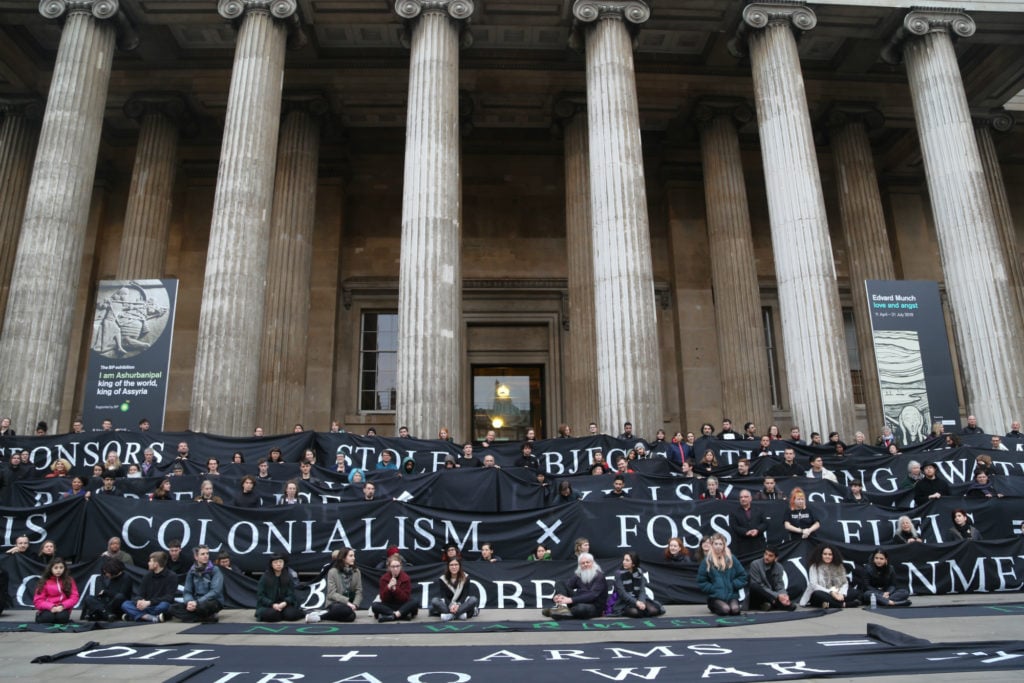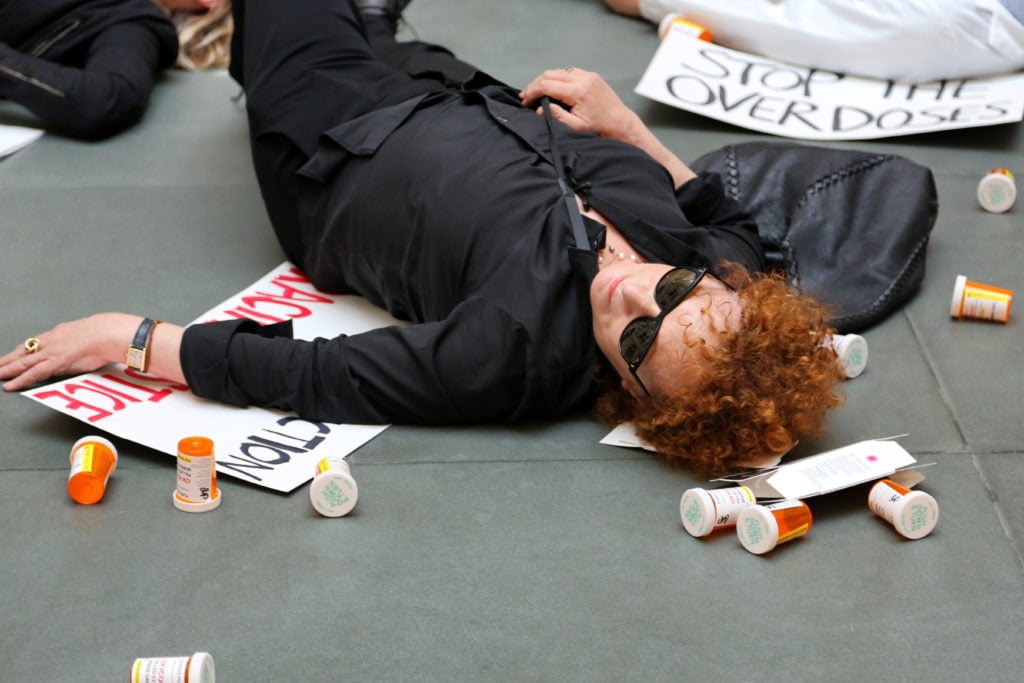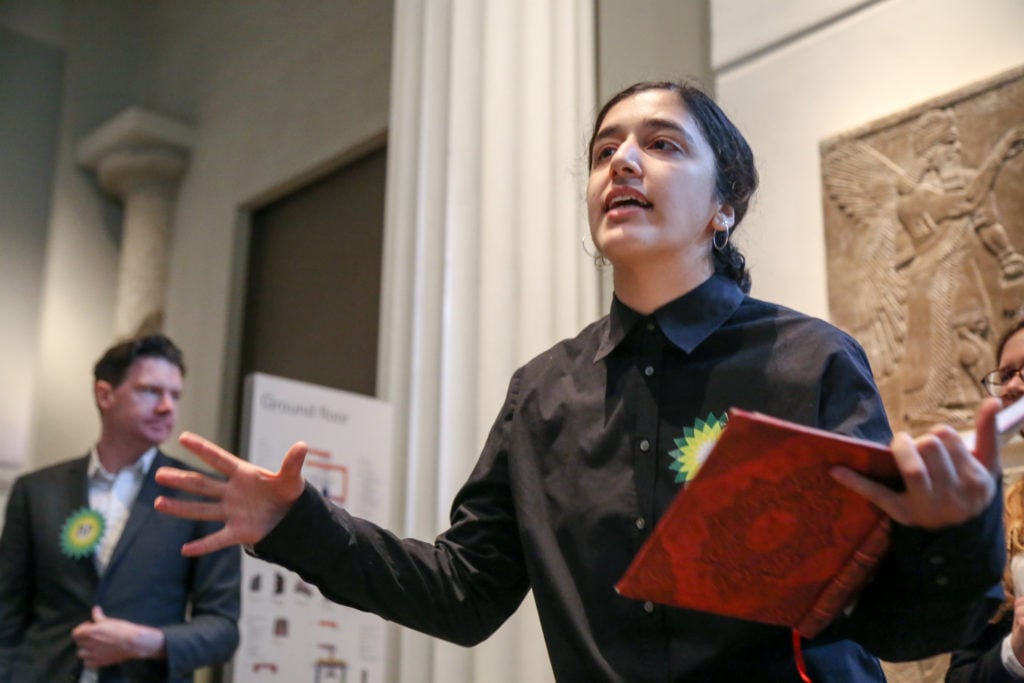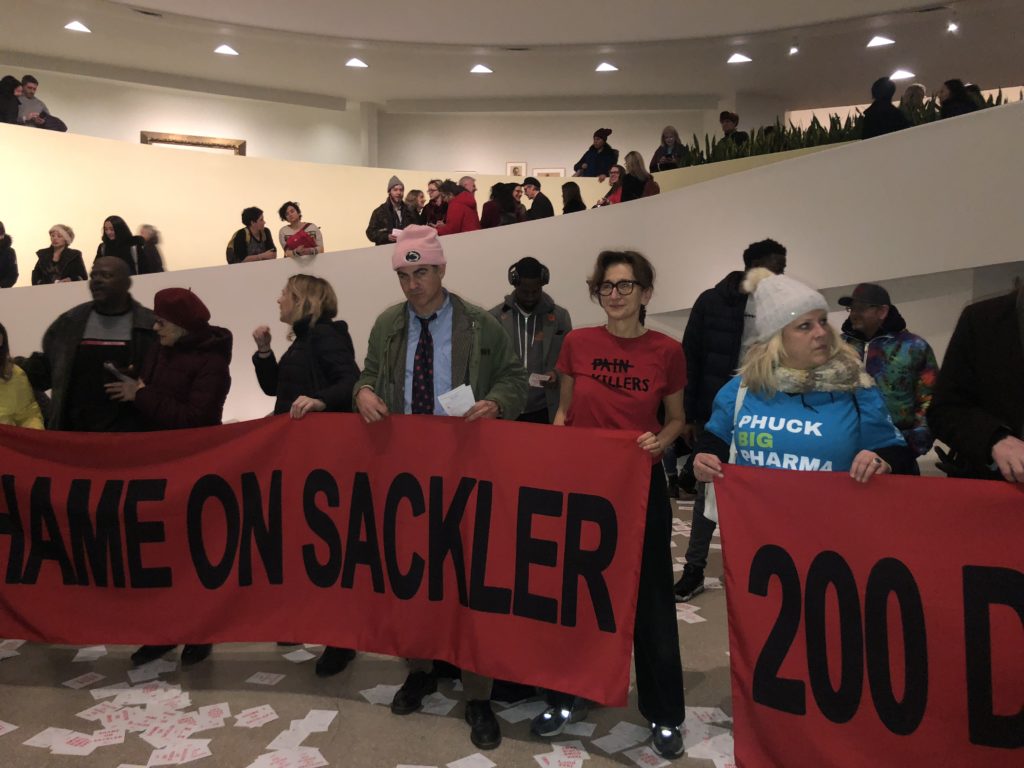Opinion
The Gray Market: Why a Changing Donor Base Might Finally Convince Museums to Get Woke (and Other Insights)
Our columnist explores why supporting progressive causes might pay off in a big way for major American art museums.

Our columnist explores why supporting progressive causes might pay off in a big way for major American art museums.

Tim Schneider

Every Monday morning, artnet News brings you The Gray Market. The column decodes important stories from the previous week—and offers unparalleled insight into the inner workings of the art industry in the process.
This week, taking a different look at the interplay between museums, money, and politics…
Two notable events in the British institutional world met on the same ethical wave last weekend. First, artist and activist Nan Goldin went public with her intention to decline a retrospective exhibition at London’s National Portrait Gallery if the institution accepts a £1 million ($1.3 million) donation pledged by the Sackler Trust, a philanthropic entity created by one of the founders and co-chairmen of Oxycontin manufacturer Purdue Pharma.
Almost simultaneously, hundreds of demonstrators converged on the British Museum last Saturday to protest its continuing partnership with oil colossus BP, which has committed a combined £7.5 million ($9.8 million) to the British Museum and three other UK cultural institutions over a five-year period ending in 2022. Organized by the group BP Or Not BP?, the action centered on the exhibition “I Am Ashurbanipal: King of Assyria, King of the World,” the most recent show for which the fossil-fuel corporation served as lead sponsor.
These developments obviously didn’t just thunder out of the clear blue sky. Goldin’s direct-action group, Prescription Addiction Intervention Now (PAIN), recently demonstrated at multiple revered American museums with philanthropic ties to various factions of the Sackler family, including the Guggenheim, the Metropolitan Museum of Art, and the Harvard Art Museums. BP or Not BP?’s activism also continues in the tradition of protests by fellow members of the Art Not Oil coalition, including those eventually credited with nudging BP to end its patronage of the Tate museums in 2016. (BP contends that it strictly wound down the sponsorship for financial reasons.)

Nan Goldin staging a “die-in” at the Harvard Art Museums. Photo: TW Collins.
Of course, Goldin’s declaration and the British Museum protest are only the latest signals that western art museums will feel more pressure, not less, to program and govern themselves in accordance with progressive causes going forward. (The ongoing drama at the Whitney over trustee Warren B. Kanders, board chair and owner of defense-manufacturer Safariland, is just one more sage leaf on the purifying inferno.) So far, though, my sense is that most museum leaders desperately want to mirror the stance of Victoria & Albert Museum director Tristram Hunt, who last spring implored institutions to remain politically neutral sites “in an era of absolutist, righteous identity politics.”
At the time, I wrote that Hunt’s position was admirable but increasingly out of step with public opinion, at least in the US. Several months later, developments in the for-profit sector now suggest that neutrality might also be costing museums significant private money precisely when they need it most.

Climate change activists protest BP’s sponsorship of the British Museum’s Assyrian exhibition. Photo by Diana More, courtesy of Climate change activists protest at the British Museum. Photo by Diana More, courtesy of BP Or Not BP?
To date, we’ve tended to hear two connected arguments for why museums should accept only certifiably virtuous patronage. The first is a purely moral one: Refusing money from ethically questionable sources is the right thing to do for the public good, and enriching the public good lies at the core of every cultural institution’s mission. The second is about loss minimization. It tries to demonstrate that, overall, museums just don’t stand to sacrifice very much money by turning away ethically dubious donors, so there’s actually little financial motivation to dunk your institution in a cesspool.
BP Or Not BP? exemplifies both arguments. Aside from highlighting the ecological and societal damage caused by the fossil-fuel industry, the group also estimates that the deal with BP accounts for less than 0.5 percent of the British Museum’s annual income. (Reached by email, a museum spokesperson declined to confirm the partnership’s actual budgetary impact “as this is commercially sensitive information.”) Certainly every dollar, euro, or pound sterling counts these days. But by offering a specific estimate, BP Or Not BP? asks whether such a small amount of support is worth helping such a controversial corporation launder its reputation.
However, there is a third argument for museums to adopt an ethical agenda, and it could actually be the most compelling of all in the muddy, high-stakes calculus of nonprofit decision-making: Being woke might be more profitable in the long run.
As always, we have to tread cautiously when comparing trends in the art world to trends in the wider world, particularly the retail market. But mounting evidence shows that money is increasingly concentrating on the political left, and preferences for progressive causes are influencing how people spend that hard-earned cash.
In the most recent of their annual State of Fashion reports, Business of Fashion and consulting behemoth McKinsey found that millennial and Generation Z customers, who already account for a combined $350 billion in spending power in the US, “are seriously concerned with social and environmental causes” and “increasingly back their beliefs with their shopping habits, favoring brands that are aligned with their values and avoiding those that don’t.”
Even more interesting, the phenomenon leaps the generation gap. The research also showed that “some two-thirds of consumers worldwide”—independent of age—“say they would switch, avoid, or boycott brands based on their stance on controversial issues.”
The result? Major retailers like Nike, Gucci, and Levi’s are pivoting hard toward what one of my favorite non-art analysts, Scott Galloway of market intelligence firm L2 Inc. and NYU’s Stern School of Business, calls “woke as a business strategy.” Relaying part of his talk at the IGNITION conference in December, Business Insider wrote:
Put simply, “Democrats have all the money” these days, according to Galloway. Demographic shifts in America mean that much of the wealth being generated in the country is centered in some very blue districts. Economic growth has been centered in major democratic strongholds like New York and California, so it makes sense for marketing to speak to these consumers first.
Now, I’m not suggesting for a moment that corporate virtue-signaling is driven by anything more than pure, uncut capitalism, or that a chasm doesn’t separate legitimate IRL activism from retail “activism.” But the point is that sincerity isn’t required for money to change hands. On average, people with the most surplus cash increasingly want to support a progressive agenda—or at least pay for a tenuous claim to it—and the for-profit world is adjusting itself accordingly.
So why wouldn’t the nonprofit world benefit by doing the same?

Dr. Zannie Voss, director of SMU DataArts.
In fact, I think “woke as a business strategy” could pay off even better for museums than for corporations. Again, cultural institutions have a more genuine and direct stake in social issues than, say, a company churning out denim, which prevents taking a stand from looking like opportunism.
On top of that, even though an increasingly large proportion of the well-off occupy the political left, philanthropic wins don’t depend on mass adoption. If a museum impresses even one plutocrat by abandoning neutrality, it can make a far more dramatic financial difference than if it impresses hundreds or thousands of average citizens.
To be sure, no money is squeaky clean—and activists and administrators alike will need to navigate exactly which lines they want to draw in the sand. But hypothetically, why accept a six-figure gift from BP if loudly rejecting the offer might help you get seven, eight, or nine figures from billionaire environmentalist Mike Bloomberg?
This prospect became even more salient this past week, when nonprofit organization SMU DataArts released a new report analyzing various aspects of institutional fundraising in the US between 2014 and 2017. As Andy Battaglia noted on ARTnews, one of the findings included the following:
Return on investment for funds attained by donations or gifts from individuals increased [over the sample period], but “larger museums really seem to be struggling with retaining the same historical levels of support from corporations, foundations, government, and trustees,” [SMU DataArts director Zannie] Voss said.
For years, then, individual giving from outside has been the only type of giving on the upswing for major institutions. The findings therefore confirm arguably the most important anecdotal trend in the art nonprofit sector this generation: museums’ increasing reliance on the largesse of wealthy private patrons—and therefore, their increasing susceptibility to said patrons’ individual desires, even on a grand scale.
Major institutions, of course, also happen to be the venues where we’re seeing the headline-grabbiest acts of protest. It only makes sense. If activists want to fight perceived social injustices at art institutions, those injustices are most likely to be exposed at the institutions that loom largest in the public consciousness and wield the greatest influence in setting precedents. Spur progressive change at a major museum, and similar reforms are much more likely to radiate further down the institutional hierarchy.

P.A.I.N. protestors at the Guggenheim Museum in February 2019. Photo: Caroline Goldstein.
In that sense, a perfect storm is brewing in the museum world, even if only in the US. At both the collective and individual levels, wealth is predominantly concentrating on the progressive end of the political spectrum, and the people holding that wealth are increasingly interested in spending it only on organizations that reflect their own views. This trend is already aggressively re-shaping behavior in mass-market and luxury retail alike.
Meanwhile, even as major American museums pride themselves on principled neutrality, the sustained retreat of all other classic funding sources, including their own trustees, means that their budgets increasingly depend on gifts from new (or newly invested) high and ultra-high net worth individuals. Those individuals are more likely than ever to lean left—and to want to send their money in the same direction, whether the target is a candidate for office, a couture dress, or (I suspect) a museum wing. Based on these incentives, the outcome seems inevitable to me.
In 1995, sportswriter Sam Smith summarized Michael Jordan’s decision to stay silent on political subjects by passing along the famous (and possibly bogus) quote, “Republicans buy shoes, too.” In 2019, though, big spending has never been such a deep blue endeavor. And for American museums, that just might make progressivism the new pragmatism.
That’s all for this week. ‘Til next time, remember: If you stand for nothing, you’ll fall for almost anything—and you might just take your business down with you.